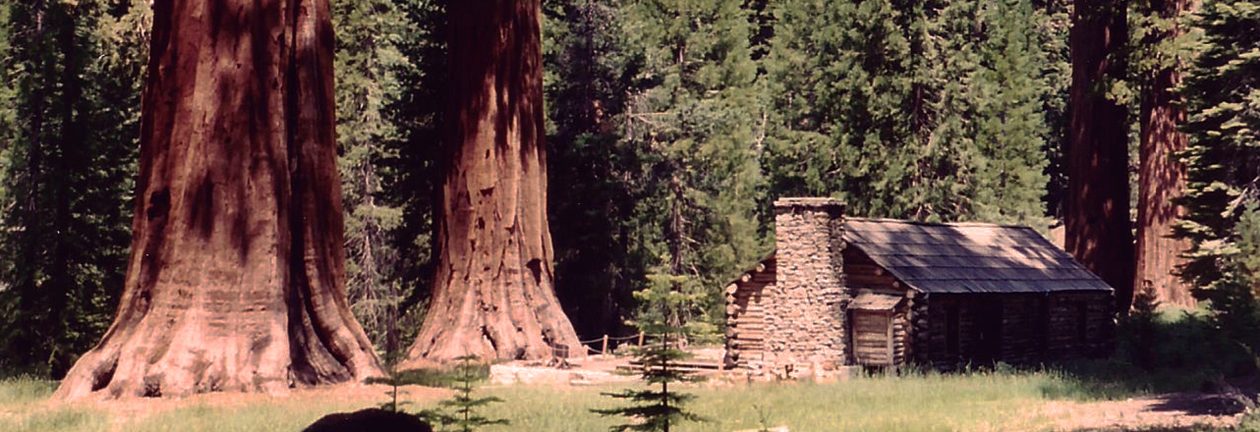Olympia, Greece
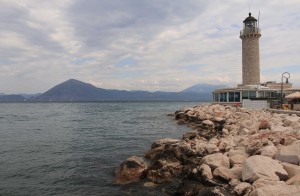
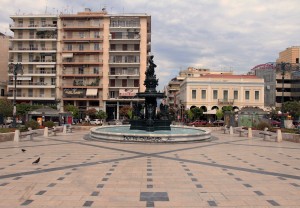
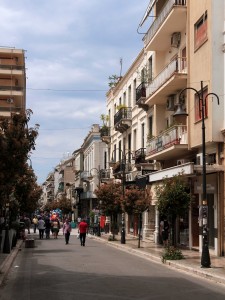
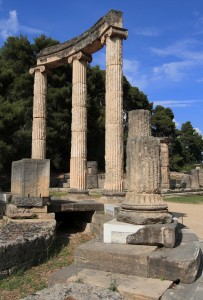
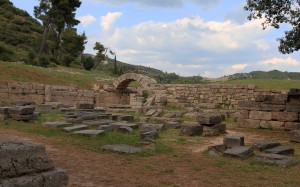
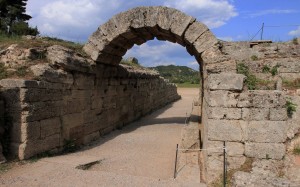
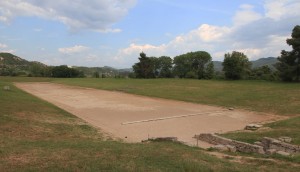
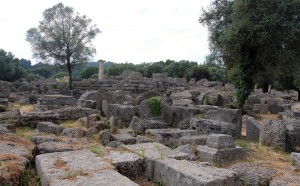
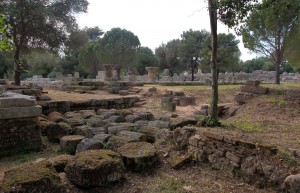
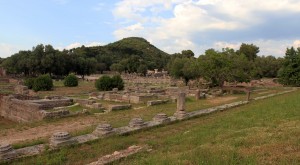
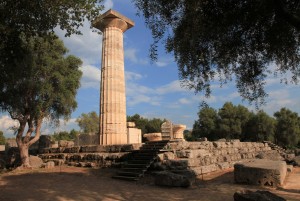
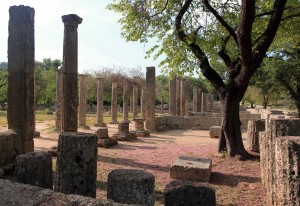
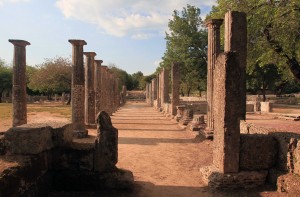
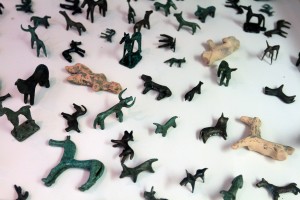
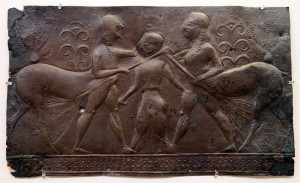
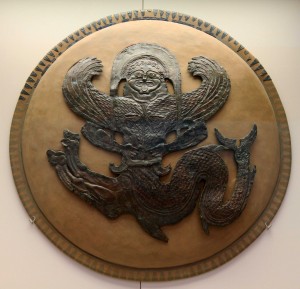
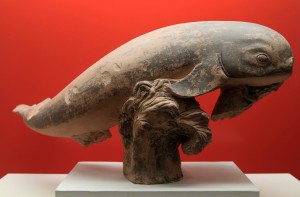
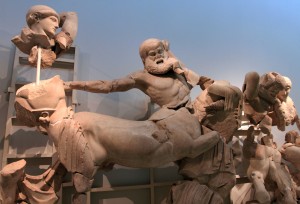
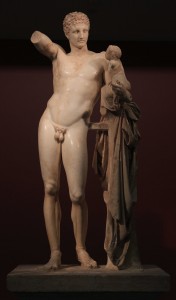
I slept in late today and it would come back to bite me on the ass later this evening. Anyway, I woke up at 10:00, showered, dressed, left my hotel room in Patra, and walked straight to the railway station. Once there, I inquired how I might get to Olympia and the woman behind the counter directed me to the KTEL bus station; so, I walked to the bus station and bought a bus ticket for the next available bus to Pyrgos (a town about thirty minutes away from Olympia, where I would need to ride a local bus to get to Olympia), which departed at 13:45; I also made sure to ask when the last bus from Pyrgos to Patra leaves and was told 21:00 – this would give me plenty of time to see the Ancient site of Olympia. Now, since it was just after 11:00 and I had to wait until 13:45, I decided to walk to the lighthouse on the rocky edge of the Gulf of Patras. The lighthouse itself was small, plain, and not very historical; there was also a café/restaurant attached to it. I then walked to the city center and to Georgiou I Square. I thought about seeing more of the city today, but decided that I didn’t have enough time to appropriately explore sites such as the castle, odeon, or archaeological museum. So, I walked back to the hotel, bought a chicken and cheese hoagie and some drinks on the way back, and returned to my room. I then ate my lunch and relaxed inside the room until 13:30, when I walked outside and returned to the KTEL bus station. I then loaded up inside the bus and, at 13:45, it took off, heading south to Prygos. The ride lasted two hours and I got some sleep on the way. We then reached the bus station in Prygos (which was very empty and quiet, like a couple of other cities the bus passed through on the way to Pyrgos – compared to Patra, these places are dead) and I rode the 16:00 bus to Olympia, which arrived there at 16:39. Once in Olympia, I walked to the ancient archaeological site and bought my combined entrance ticket for the site and the museum. After entering inside the archaeological site, I explored the area and viewed the ruins of the sanctuary of Olympia. I walked by what was left of the Gymnasium (from the second-century BC), the Kronion Thermae (from the second-century BC), the Philippeion (donated by Philip II after the battle of Chaeronea in 338 BC), the Temple of Hera (the oldest temple of the sanctuary, from the seventh-century BC), the Nymphaion (a monumental fountain built in the second-century AD and originally adorned with many statues), the Metroon (built in the fourth-century BC and dedicated to the Mother of the Gods, Kybele or Rhea), the Stadium and its arched entranceway, the Echo Portico (a famous building for acoustics, built in the fourth-century BC), the Octagon (also known as “Nero’s House” – where the infamous emperor stayed in 67 AD during his participation during the Olympic Games), the South Portico (from the fourth-century BC), the Leonidaion Thermae (a bathhouse that was later converted in to a wine factory, from the third- to sixth-century AD), the Workshop of Pheidias (original built in the fifth-century BC and later converted in to a basilica in the fifth-century AD; Pheidias is the one who created the Chryselephantine Statue of Zeus – one of the Seven Wonders of the World), the Leonidaion (a large rectangular building built in the fourth-century BC), the Palaistra (built in the third-century BC, now with sections of its colonnade still standing amidst the ruins), and the Temple of Zeus (built between 470 and 457 BC, it contained the Chryselephantine Statue of Zeus, which was made out of gold and ivory and – once again – was one of the Seven Wonders of the World). After touring the sanctuary of Olympia, I walked to the museum nearby and viewed the various artifacts on display (e.g. votive figures, weapons, shields, statues, etc. – pieces found in and around the site of Olympia).
By the time I finished looking around the museum at 19:11, I returned to the modern-day city of Olympia and waited at the bus stop, hoping to catch the 19:30 bus back to Pyrgos, which would then give me more than enough time – even with a forty-minute drive) to catch the last bus from Pyrgos to Patra, which was scheduled to leave at 21:00 (“Does everybody got that?”). Well, I waited and waited, and no bus came. I then asked a local what time the bus was scheduled to come and she told me “20:30” . . . okay, so I was wrong on the 19:30 bus (it didn’t exist) and it was very unlikely I would make it back to Pyrgos in time for the 21:00 bus back to Patra, but I was determined to try anyway. So, I waited and waited, and no bus came at or around 20:30. Okay . . . I then walked to a café attached to the disused railway station, right next to the bus stop and asked the bartendress what time the bus will come; she told me “22:15” and pulled out the bus schedule to prove it. It turns out that the last bus left at 18:30 and there was then a gap in service until 22:15. In other words, “I was fucked.” Too bad the taxi drivers nearby didn’t say anything to me; if they had shown me a schedule (I certainly wouldn’t have taken their word on it, not after what I’ve been through) or some hard evidence, they would’ve probably made twenty to thirty Euros off of me . . . but they were too stupid to realize that I was standing out there for over an hour waiting for a bus that would not come until too late. Idiots. With that disappointing news, I walked out about a kilometer, to the edge of town, and tried to hitch a ride back to Patra, holding my thumb out in the cool night for each passing car to see. I tried this for a half-hour and decided that even if I did get someone to stop, they would probably only be able to take me a portion of the way and I would have to do this again and again throughout the night, in the cold night, in my shorts and t-shirt . . . actually, if I had long pants and a jacket, I would’ve considered sleeping outdoors amongst the fireflies and I would’ve had a great time with those crazy insect fairies, but, alas, it was too cold for what I was wearing and I would have shivered the whole night. Defeated, at 21:30, I walked back in to town. I would have to spend the night in Olympia and pay for a hotel room here, along with the one in Patra I was already paying for. One consolation for me was that I did see quite a lot of fireflies out at the edge of Olympia – this may seem like nothing to most people, but I honestly can’t remember the last time I saw a firefly (it has been years) and I can’t recall ever seeing as many as I did here; Olympia truly is a magical place. Anyway, I returned to the railway station café in Olympia and learned the bus schedule for tomorrow morning – 06:55 from Olympia to Pyrgos and 08:15 from Pyrgos to Patra (oh, right, I guess I should mention that it would have been possible for me to take the 22:15 bus back to Prygos and catch an earlier bus back to Patra from there, but after driving through Pyrgos today and seeing how empty and dead it was, I decided to stay in Olympia for the night). I then searched for a hotel to stay at. The first place offered me a room for 38 Euros a night (too high for my wallet) and the receptionist told me (with a stupid grin on his face) that I would only be able to find a room for maybe two to three Euros less. Well, like most people in this world, he lied to try to get money. The very next place I stayed had a kind, smiling old woman at the reception desk and she told me I could have a room for 25 Euros. I thanked her and said I would most likely be back. I then walked back to the first hotel and told the receptionist about my find and told him he was liar (I couldn’t help it . . . fuck that asshole . . . especially since he knew my predicament and knew I only needed a bed or a couch or a floor). Then, I checked one more hotel and was given a price of 45 Euros. With this knowledge, I decided I would be hard pressed to find something less than 25 and returned to the second hotel with the friendly receptionist. I then got my room, paid for it, walked to the market, bought some junk food (popcorn, beer, nuts, and juice). I then walked to a nearby restaurant and bought a gyro. With this food in hand, I walked back to the hotel, entered my room, and chowed down on some food while watching the second half of Baz’s ‘The Great Gatsby’ (directing was too over-the-top and I though Tobey Maguire was miscast, but I did enjoy Leonardo’s performance). I then watched the beginning of ‘Before the Devil Knows You’re Dead’ (great movie) before setting my alarm and going to sleep after midnight.
